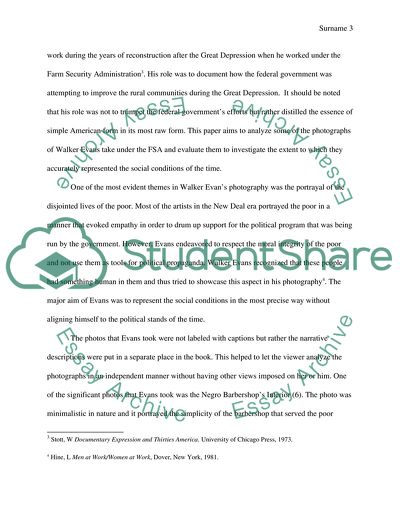Cite this document
(Walker Evans FSA Photographs Case Study Example | Topics and Well Written Essays - 2500 words - 1, n.d.)
Walker Evans FSA Photographs Case Study Example | Topics and Well Written Essays - 2500 words - 1. Retrieved from https://studentshare.org/design-technology/1788593-to-what-extent-are-walker-evans-fsa-photographs-an-objective-recording-of-social-conditions
Walker Evans FSA Photographs Case Study Example | Topics and Well Written Essays - 2500 words - 1. Retrieved from https://studentshare.org/design-technology/1788593-to-what-extent-are-walker-evans-fsa-photographs-an-objective-recording-of-social-conditions
(Walker Evans FSA Photographs Case Study Example | Topics and Well Written Essays - 2500 Words - 1)
Walker Evans FSA Photographs Case Study Example | Topics and Well Written Essays - 2500 Words - 1. https://studentshare.org/design-technology/1788593-to-what-extent-are-walker-evans-fsa-photographs-an-objective-recording-of-social-conditions.
Walker Evans FSA Photographs Case Study Example | Topics and Well Written Essays - 2500 Words - 1. https://studentshare.org/design-technology/1788593-to-what-extent-are-walker-evans-fsa-photographs-an-objective-recording-of-social-conditions.
“Walker Evans FSA Photographs Case Study Example | Topics and Well Written Essays - 2500 Words - 1”, n.d. https://studentshare.org/design-technology/1788593-to-what-extent-are-walker-evans-fsa-photographs-an-objective-recording-of-social-conditions.


